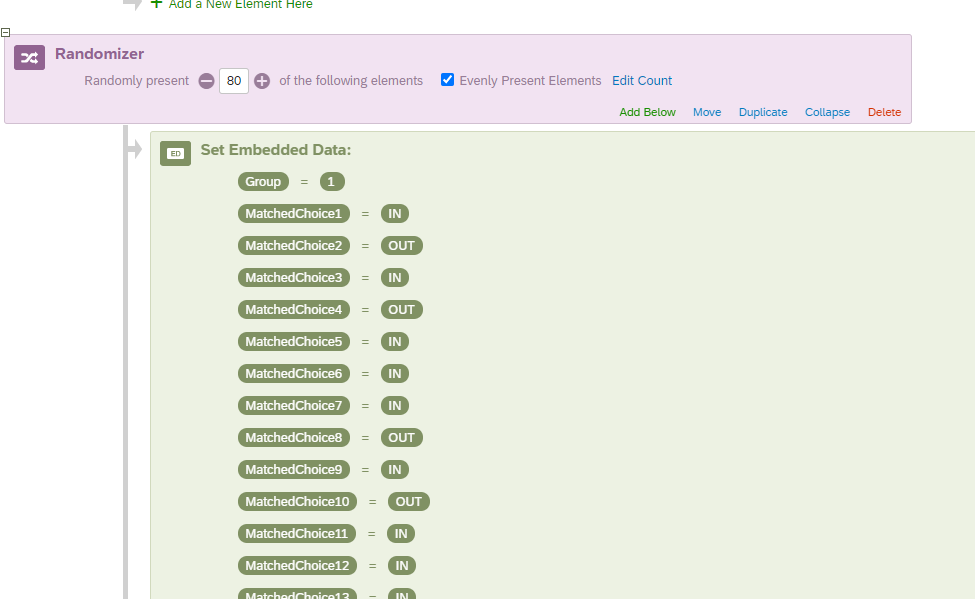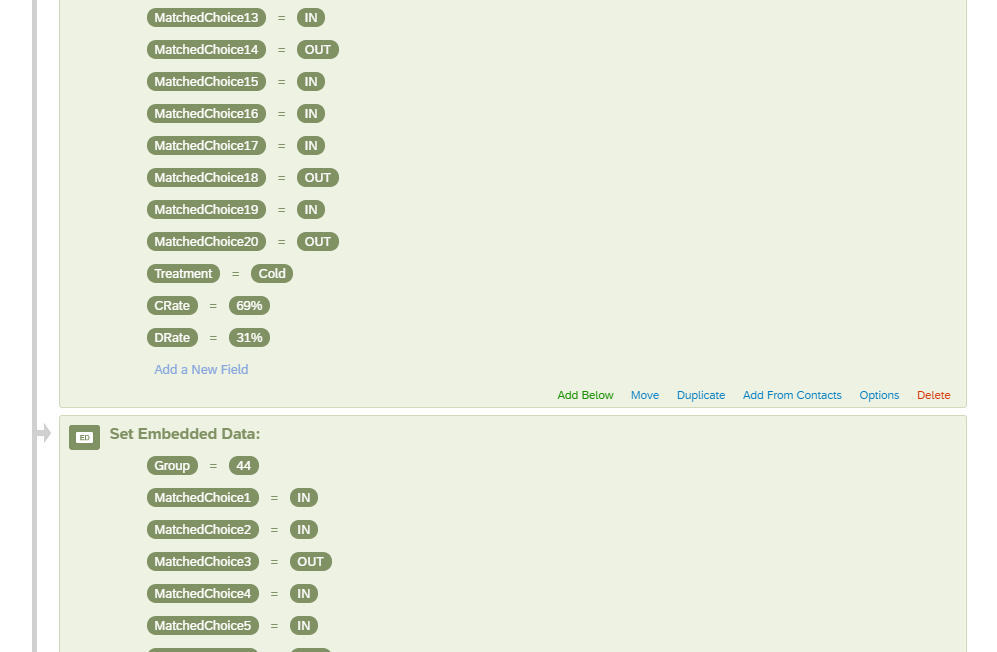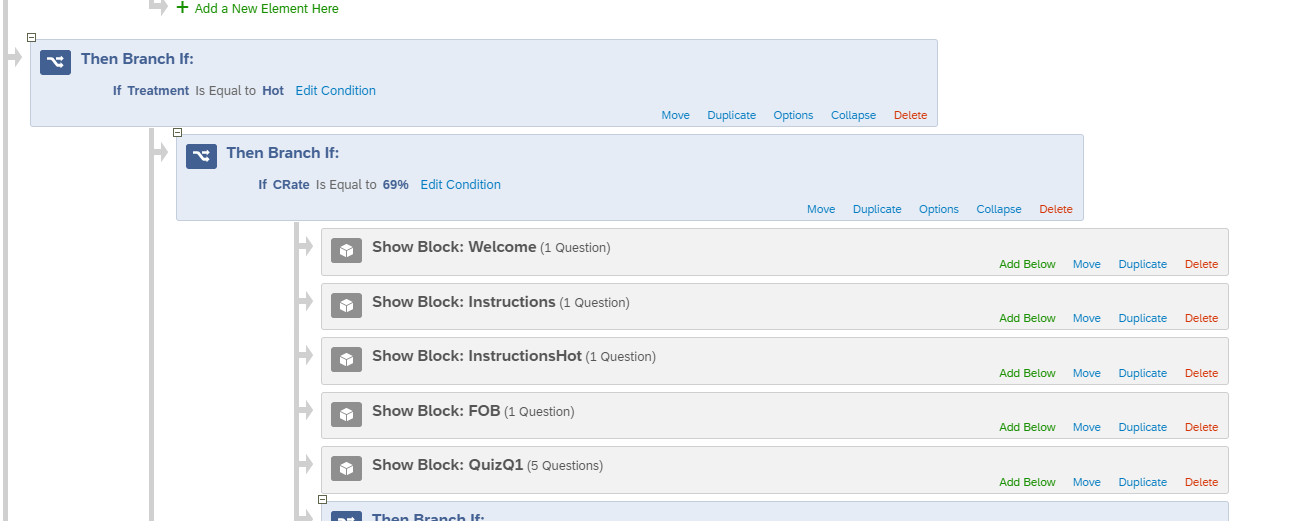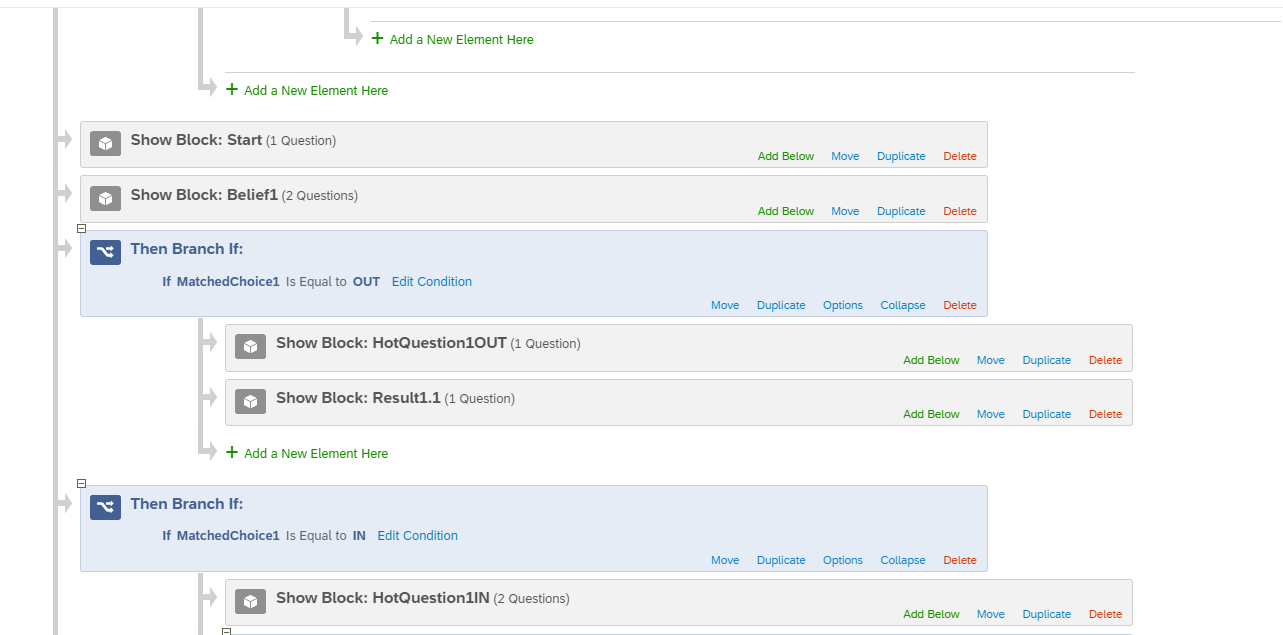In randomizer, I wanted to show only 1 element out of 80 elements. Those 30 elements are embeded data that determin which block they will be directed to in the future.
However, I forgot to change the number in " Randomly present xx of the following elements" from 80 to 1 when I added elements and already collected the data.
In the data, I got the embeded data in the randomizer for each subject. However, I am not sure whether it is correct. I tried with my survey myself, it seems that the mistake I made doesn't matter. Each subject still get one of the elements from randomizer. Only thing that matter is the edit count.
Is my understanding correct?
Thank you!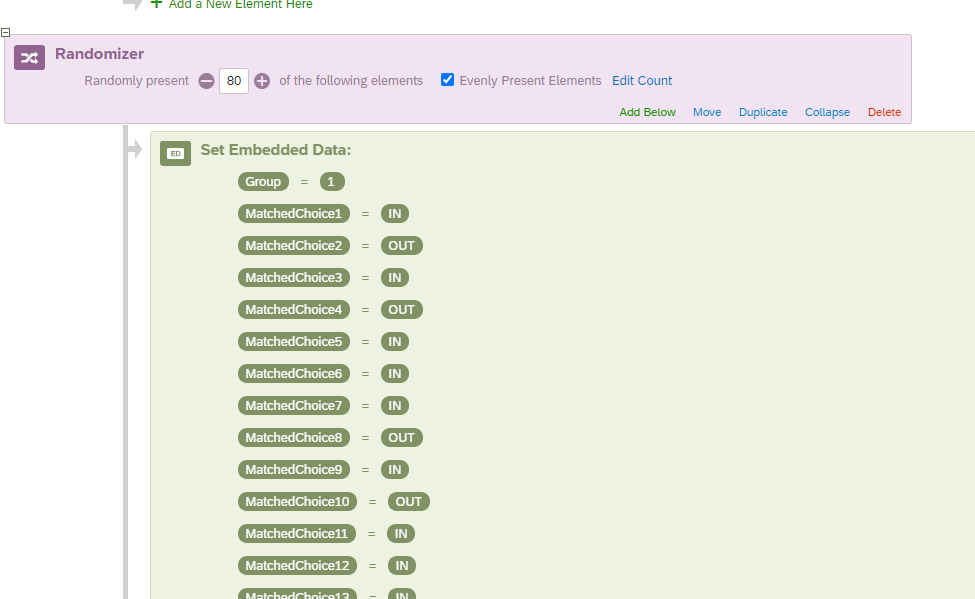
Question
Forget to change the number in " Randomly present xx of the following elements" in Randomizer
Enter your E-mail address. We'll send you an e-mail with instructions to reset your password.



